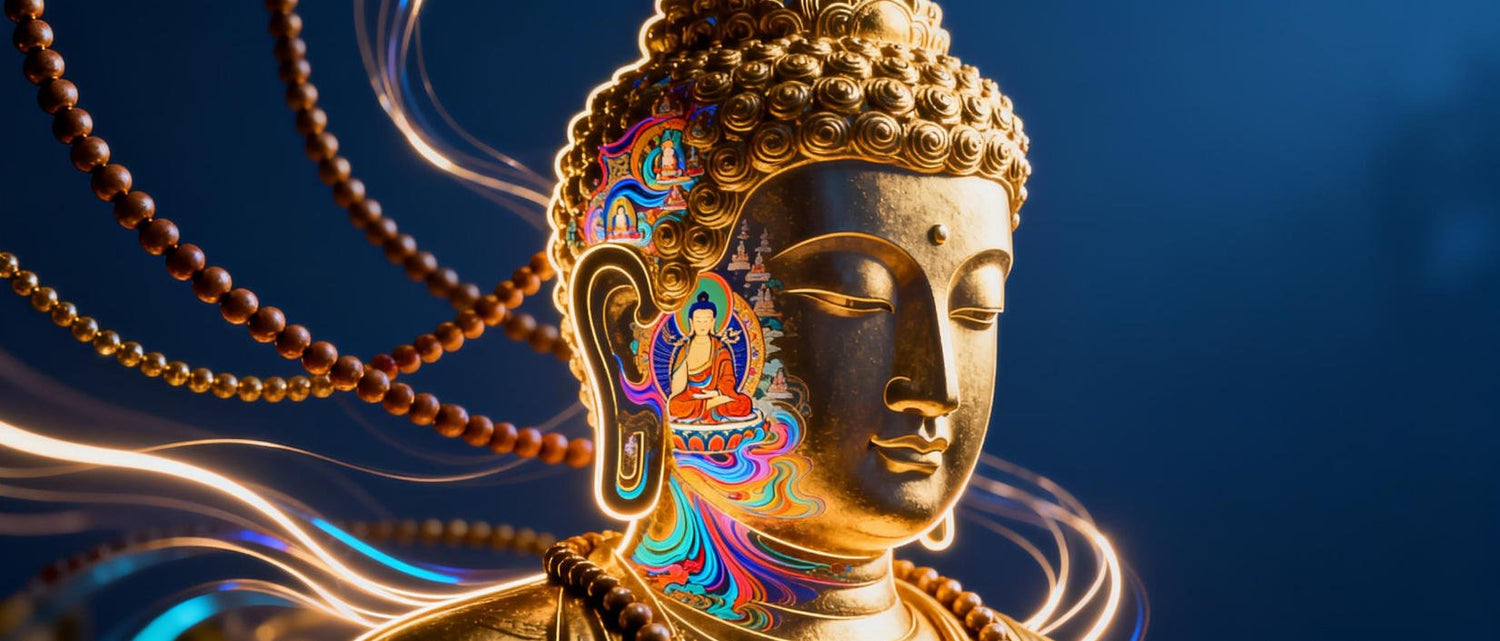
Thangka Art: More Than Decoration, A Portal to the Divine
You step into a room, and your eyes are drawn to a vibrant, intricate painting. Rich jewel tones of crimson and gold depict serene figures in impossible landscapes. Your first thought might be: What a beautiful work of art. But you are not just looking at a decoration. You are standing before a portal. A Thangka is a sacred, technical, and deeply spiritual blueprint for enlightenment, designed not merely to be admired, but to be entered with the eyes and the heart.
(The Architect's Blueprint: A Map for the Mind)
Forget the Western concept of a painter expressing their soul. A Thangka painter is a architect of the divine. The process begins not with inspiration, but with invocation. Every line, every proportion, is dictated by sacred geometric grids laid down centuries ago. There is no room for artistic ego.
The central figure—a Buddha, a Bodhisattva like Chenrezig of Compassion, or a protective deity like Mahakala—is not a portrait. It is a precise representation of a state of consciousness. Their posture, their hand gestures (mudras), and every object they hold are a coded language. To meditate upon a Thangka is to use this map to navigate the vast landscape of your own mind, steering it toward qualities like compassion, wisdom, or fearlessness.
(A Symphony of Symbolism: Reading the Visual Language)
To understand a Thangka is to learn to read. The entire composition is a dense text written in color and form.
-
Colors are Emotions and Elements: The deep blues of a Buddha's hair are not a stylistic choice; they represent the boundless, sky-like nature of reality. The green of a deity's skin might symbolize active, wind-swept compassion. Fiery reds embody passionate, transformative energy, while luminous whites convey purity and stillness.
-
Flowers, Skulls, and Vajras: A lotus blossom rising from mud signifies purity emerging from suffering. A crown of skulls represents the conquest over negative states of mind. A vajra (ritual dagger) held firmly in hand is an unshakable diamond-like clarity that cuts through ignorance. Nothing is accidental.
(The Living Bridge: Consecration and the Breath of Life)
The most crucial moment in the life of a Thangka comes after the final brushstroke has dried. In a sacred ritual, a high lama consecrates the painting. This is not a simple blessing. Mantras are chanted, and through profound meditation, the lama invites the wisdom and energy of the depicted being to animate the image.
This process, known as rabné, is what transforms pigments and cloth into a living vessel. The eyes of the deity are "opened." A consecrated Thangka is no longer a representation; it is a residence. It becomes a focal point for prayer, a source of blessings, and a constant, silent teacher in your home.
(From Monastery to Living Room: Integrating Sacred Art)
How do you live with such a powerful object? You do not need a temple.
Place your Thangka in a clean, respectful space—a meditation corner, a study, a room where you seek peace. It should be at eye level. It is not meant to blend in with the decor; it is meant to transform the energy of the decor. When you sit before it, don't just look at it. Let your gaze soften. Allow the colors to wash over you. Follow the lines inward. It is a silent guide, reminding you of the clarity, compassion, and boundless potential that already exists within you.
(Conclusion: An Invitation to Look Deeper)
A Thangka asks for more than a glance; it demands a gaze. It is an invitation to a journey, offering a visual anchor for the invisible work of spiritual growth. It is a testament to the idea that beauty, when rooted in truth, can be a profound vehicle for transformation.
Ready to invite a sacred presence into your space? Explore our collection of authentic, hand-painted, and consecrated Thangka art and pendants. Each piece is a gateway to a deeper practice. And to continue your journey into sacred tools, learn about the foundation of meditation with our guide to choosing your mala beads.
>>>Click to learn more





